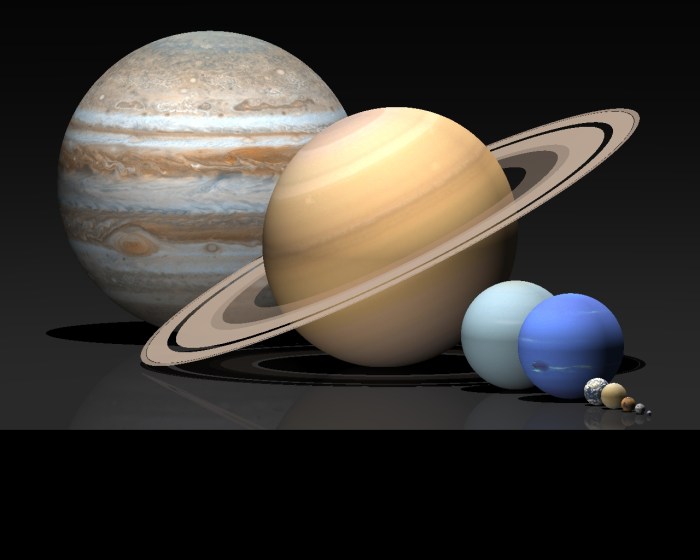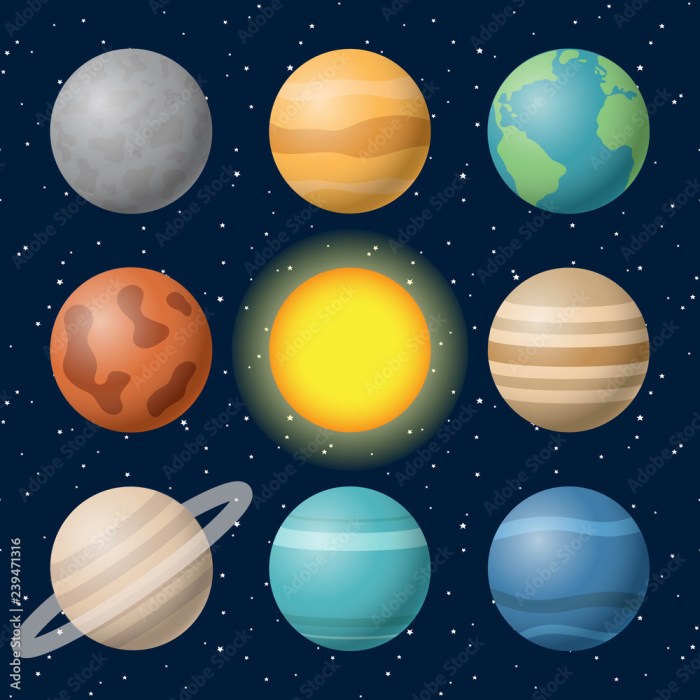As we delve into the fascinating realm of planetary science, we embark on a quest to rank the planets shown in order of increasing overall density. This endeavor unveils a treasure trove of knowledge, shedding light on the diverse characteristics and internal structures of these celestial bodies.
Prepare to be captivated as we explore the intricate interplay between density and planetary composition, size, and gravitational forces, unraveling the secrets that lie within these enigmatic orbs.
Our journey begins with a comprehensive overview of density, its significance in planetary studies, and the factors that shape the density of a planet. We will delve into the intriguing relationship between density and planetary structure, uncovering how this parameter provides valuable insights into the composition and layering of different planetary bodies.
Furthermore, we will investigate the implications of planetary density for planetary formation and evolution, examining how density measurements can refine our understanding of these processes.
Planet Densities
Density is a measure of how much mass is packed into a given volume. For planets, density is an important property that provides insights into their composition, structure, and formation. The density of a planet is determined by the mass and volume of the planet.
The higher the mass and the smaller the volume, the higher the density.
The following table lists the densities of the eight planets in our solar system, arranged in ascending order:
| Planet | Density (g/cm3) |
|---|---|
| Saturn | 0.687 |
| Uranus | 1.27 |
| Neptune | 1.64 |
| Mars | 3.93 |
| Venus | 5.24 |
| Earth | 5.51 |
| Mercury | 5.43 |
| Jupiter | 1.33 |
Factors Affecting Density: Rank The Planets Shown In Order Of Increasing Overall Density

The density of a planet is influenced by several factors, including:
- Composition:The composition of a planet plays a significant role in determining its density. Planets that are primarily composed of heavy elements, such as iron and nickel, will have higher densities than planets that are primarily composed of lighter elements, such as hydrogen and helium.
- Size:The size of a planet also affects its density. Smaller planets tend to have higher densities than larger planets because the gravitational forces are stronger in smaller planets, compressing the material more tightly.
- Gravitational forces:The gravitational forces within a planet affect its density. The stronger the gravitational forces, the more tightly the material is compressed, resulting in a higher density.
Density and Planetary Structure

The density of a planet can provide insights into its internal structure. Planets with high densities tend to have dense cores, while planets with low densities tend to have less dense cores. The density profile of a planet can also provide information about the layering of different materials within the planet.
For example, the Earth has a high density core of iron and nickel, surrounded by a less dense mantle of silicate rocks, and a very low-density crust of continental rocks. The density of the Earth gradually increases from the crust to the core, reflecting the increasing pressure and temperature with depth.
Implications for Planetary Formation
The density of planets can inform our understanding of their formation and evolution. Planets that are formed from the same protoplanetary disk tend to have similar densities, suggesting that they formed from similar materials and under similar conditions.
Density measurements can also help constrain models of planet formation and accretion processes. For example, the density of the Earth’s core suggests that it formed through a process of metal-silicate segregation, where the heavier iron and nickel sank to the center of the planet during its early formation.
Density and Habitability

The density of a planet may have implications for its habitability. Planets with high densities tend to have stronger gravitational forces, which can make it difficult for atmospheres to escape. This can lead to the accumulation of greenhouse gases in the atmosphere, which can make the planet too hot for life to thrive.
On the other hand, planets with low densities tend to have weaker gravitational forces, which can make it easier for atmospheres to escape. This can lead to the loss of volatile gases, such as water vapor, which are essential for life as we know it.
Quick FAQs
What factors influence the density of a planet?
The density of a planet is primarily determined by its composition, size, and gravitational forces. Planets composed of heavier elements and with a smaller size tend to have higher densities.
How does density relate to planetary structure?
Density provides insights into the internal structure of planets. Planets with higher densities often have denser cores and thinner mantles, while planets with lower densities may have thicker mantles and less dense cores.
What are the implications of planetary density for habitability?
Planetary density can influence habitability by affecting factors such as atmospheric composition, surface conditions, and the presence of liquid water. Planets with higher densities may have thicker atmospheres and higher surface pressures, while planets with lower densities may have thinner atmospheres and lower surface pressures.